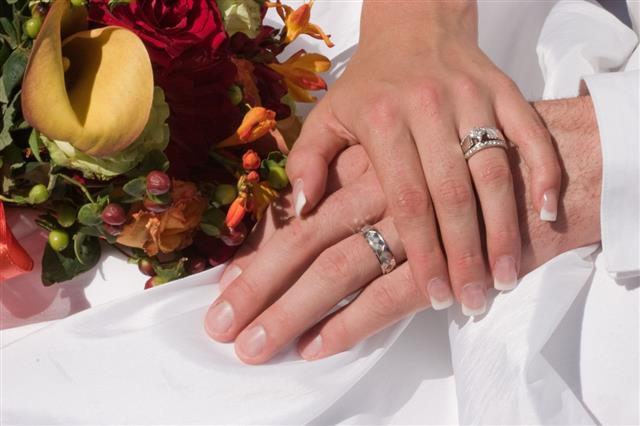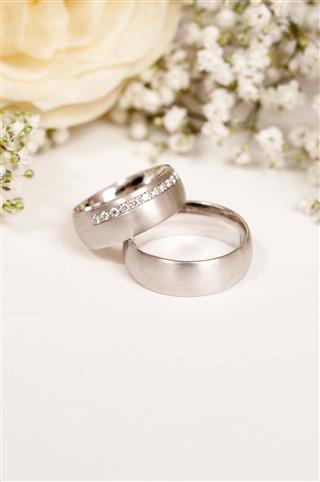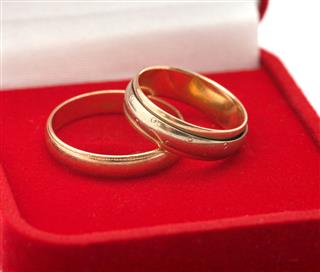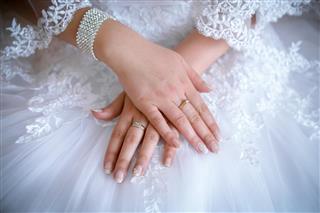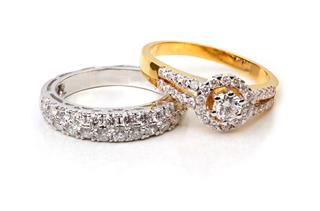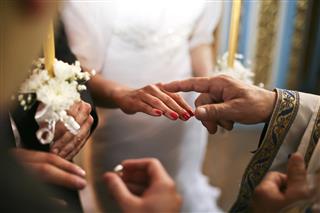
Women in Germany wear their engagement rings on the fourth (the thumb being considered the first) or ring finger of the left hand and their wedding rings on the ring finger of the right hand. However, in Ukraine, both the engagement and the wedding rings are worn on the right hand.
Did You Know?
The first ever recorded engagement ring was introduced in the year 1477, when King Maximilian I of Austria, Germany gave Mary of Burgundy a diamond ring as a token of their love to seal his vow.
The Idea Behind The Promise Ring
An engagement ring is more than just a piece of sparkling jewelry. It is a testimony to the love and commitment of a couple and the fact that the woman who now bears the ring is engaged to be married. As men propose to their future brides, they present these rings as betrothal gifts to the women they love. In some cases, they replace the promise rings that are exchanged to express a strong intent of taking a relationship forward so that it ultimately culminates into marriage. An engagement ring tells the world that the promise made with a promise ring has been successfully sealed in stone. It is a way of telling the world that the person has made a commitment to someone else.
There are times when a woman buys her partner this ring. Known as male engagement rings, these are worn to signify impending nuptials. However, having said that, not many of us are aware of the finger the engagement ring has to be worn on. The answer to that varies according to the tradition of different countries. While in some countries like the United Kingdom, the United States of America, and Brazil you should slip this ring on the fourth finger of a person’s left hand, in others, like Poland and Ukraine, tradition dictates that the ring be worn on the right hand. There are many age-old traditions which determine the choice of the finger.
The Idea Behind The Ring Finger
The most popular tradition of donning the ring on the fourth finger of the left hand started a long time ago because it was believed that it was connected to the vena amoris, also called the veia d’amore or the “vein of love” – the very vein that supposedly ran directly from the left ring finger to the heart. Hence, the tradition of wearing the ring on the finger that was believed to be in direct connection to the heart.
This concept, now proven to be a myth, can be traced back to ancient Egypt and probably came into existence because the human heart leans slightly towards the left. Residents of Australia, Brazil, Canada, Chile, France, Iran, Ireland, Italy, Mexico, Sweden, Slovenia, the United States, the United Kingdom, and other Commonwealth nations usually wear their wedding rings on the left hand.
In countries like Poland, Ukraine, Venezuela, Spain, as well as among the Eastern Orthodox and Eastern Catholic Christians, the tradition is to showcase the engagement as well as the wedding ring on the right hand as there are certain beliefs that attach a negative connotation to the left hand. The derogatory connotation basically percolated down from the Romans, for in Rome the Latin word for left is “sinistra”, a word that evolved into the English “sinister” and the Latin equivalent for right is“dexter”, which evolved into “dexterity”. Thus while left stood for negativity, the right was considered good. The Scottish, however, choose to wear their engagement rings on the right hand and their wedding bands on the left.
There are certain religious reasons for choosing a specific engagement ring finger. For example, in the Jewish culture, couples place the wedding ring on the right hand during the marriage ceremony and wear it on the left hand post-ceremony.
The Engagement Ring Vs. The Wedding Ring
The dilemma as to where to place the ring often arises on the D-Day when the wedding ring is presented as well. While the ring signifies an intent to get married, wedding rings show an actual marriage. The etiquette usually dictates, that the engagement ring and wedding ring go on the left hand. Just before walking down the aisle, the bride moves the engagement one to the opposite hand. After the ceremony, she can place it back on the left hand in front of the wedding ring. Some women simply leave their rings on their fingers and switch the places of the rings later on. In countries like Azerbaijan, Bulgaria, Germany, Poland, Russia, and Scandinavia, the wedding ring is worn on the right ring finger.
So, whether you are someone wanting to give a beautiful diamond engagement ring or someone who hopes to receive one, knowing engagement ring traditions is useful for making an educated decision. Modern customs and observations do vary from region to region, but knowing the traditional reasons behind choosing a particular finger for the ring of betrothal always helps.







